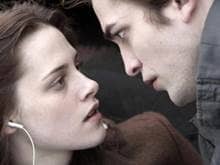
From "Nosferatu" to "Buffy"'s Angel and beyond, check out how some of Hollywood's top fanged friends have evolved throughout time.
"Do you want me to bolt the doors so you can massacre the unsuspecting townsfolk?" I whispered conspiratorially.
"And where do you fit into that scheme?" He glared.
"Oh, I'm with the vampires, of course." – Bella and Edward, "Twilight"
How did it happen that we threw our lot in with the vampires? Not so long ago, these creatures were loathsome things—God-forsaken Bogey Monsters consumed by inhuman appetites and in league with the Devil. These days, most vampires aren't all that bad. In Stephenie Meyer's spectacularly successful "Twilight" series (the film of the same name, based on the books, hits theaters on November 21), vampire Edward Cullen is the good guy—though he still has some curious eating habits.
The vampire has undergone a remarkable facelift over the last century or so. The creature's media incarnations are reflective of how we process the weightiest of issues: Death, sex, evil and our own conflicted natures.
The First Vampire: Nosferatu
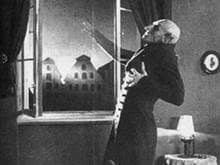
Sure, maybe he comes from a rich family and owns a nice big castle. But let's face it: No one would want to invite Count Orlock for dinner. He's got these rodent-like teeth, for one thing (too bad orthodontists don't work nights). For another, he seems to be a harbinger of the Plague—a sure conversation killer.
The film "Nosferatu," made in Germany shortly after World War I, does not dabble in ambiguity. Everyone saw what evil looked like back then, and they knew it wasn't pretty. Orlock is evil unmasked, a walking corpse who barely even looks human anymore. And even when a hint of emotion stirs within his cold, cold heart—when the beautiful maiden Ellen offers herself to the monster in order to kill him—Orlock's nocturnal advances just come across as … icky. Eternal life never looked less inviting.
Vampire Legend: Dracula
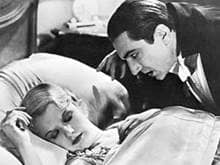
Before Bram Stoker wrote his horror novel "Dracula" in 1897, vampires were about as romantic as shower mold. But while Stoker's titular vampire looked an awful lot like Count Orlock ("Nosferatu" was actually a rip-off of the book), Stoker also infused him with a strange sort of sex appeal that mesmerized the novel's Victorian-era readers.
When Universal Pictures adapted Stoker's book in 1931, they downplayed the vampire's horrific visage and amped up his way with women. Enter Bela Lugosi, who set the bar for every romantic vampire lead since. Oh, sure, Lugosi's Dracula was still darn evil: He shied away from crucifixes and didn't think twice about draining a maiden of blood, but his was a more seductive evil—a walking representation of temptation. He didn't frighten his victims. He hypnotized them. The message was clear: Sex and sin in may seem inviting, but danger lurks underneath that dinner jacket and cape.
Vampire Prince: Dracula, Prince of Darkness
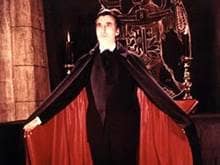
Lugosi begat Christopher Lee who, in 1958, took on Lugosi's cape, hypnotic eyes and sex appeal and dominated Hammer Films' classic monster horror franchises of the 1960s. Horror was no black-and-white slight-of-hand by this time: The blood was bright red and Dracula's sex appeal was—well, let's just say, a little more overt.
Indeed, Dracula proved so popular with audiences that he brought a whole new meaning to the term "undead." Even when you killed him, the vampire kept popping up. Neither stakes nor sunlight nor, in this film, rushing water could get rid of the guy. Filmmakers weren't trying to make a grand moral statement, here: They just didn't want to kill off a moneymaking franchise. But it does remind us that our most unwanted habits and predilections, even when we think we've kicked them for good, still tend to rise up and haunt us from time to time.
Vampire Show: Dark Shadows
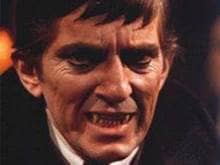
As hypnotic as vampires may have been in the 1960s, most were still pretty darn evil, and there wasn't much you could do with 'em in the end but drive a stake through their hearts.
Public perception of vampires began to change when Barnabas Collins (Jonathan Frid) showed up on ABC's soap "Dark Shadows" in 1967. Collins was a reluctant bloodsucker—a guy who loathed his current status so much that he begged for someone to kill him and, when no one would, had himself chained in a coffin. Too bad no one posted a "do not disturb" sign on the casket.
Collins helped make vampires cool. A young Johnny Depp even wanted to become Barnabas.
"I think a lot of kids did," Depp told Entertainment Weekly. "He was super-mysterious, with that really weird hairdo and the wolf's-head cane. Good stuff."
Vampire Clan: Lost Boys
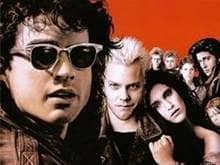
Vampire Lovers: Bram Stoker's Dracula
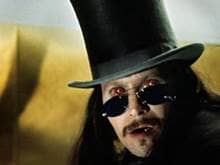
Francis Ford Coppola's creepy retelling of "Dracula" was far more faithful to Stoker's book than the 1931 classic. Here, Dracula was able to walk around in the daytime: The idea that vampires died in sunlight was really started by "Nosferatu," perhaps as a way to encourage sunscreen sales. But Coppola did give Dracula something he'd never really had before: A heart.
Sure, Gary Oldman's Dracula was as creepy as they come. And, just as always, he had a yen for Mina Murray's blood. But this time around, he also loved the girl, and the girl, it seemed, was smitten with him, too. The vampiric side of Dracula needed a good stab through the heart, but his lingering humanity cried out for salvation. And indeed, it seems Dracula receives both at the end of the film—right before a still-smitten Mina cut her lover's head off. Seems even Dracula isn't beyond God's grace.
Vampire Book: Interview with the Vampire
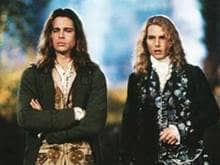
Throughout most of their history, vampires inhabited a universe in which good and evil were universal truths. And the bloodsuckers—well, Barnabas Collins aside, they were almost always the bad guys.
Author Anne Rice flipped all that on its ear with her 1976 book "Interview with a Vampire," perhaps the most influential vampire novel since Stoker's "Dracula. Made into a movie in 1994 starring the pale-yet-hunky duo of Brad Pitt and Tom Cruise, "Interview" showcased vampires that inspired not only fear, but also admiration and compassion. Angsty Louis (Pitt) abstained (mostly) from drinking human blood; Lestat (Cruise) wallowed in it. And while Louis wrestled with his vampirism using traditional terms—sin, evil, guilt--Lestat believed that vampires were above such bourgeoisie ideals. Interestingly, Rice was an atheist when she wrote these books. She later returned to her native Roman Catholicism and is now writing about the life of Jesus.
Vampire Killer: Buffy the Vampire Slayer
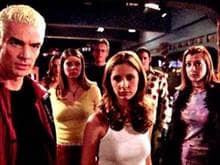
In 1997, the upstart WB network opted to turn an utterly forgettable Hollywood farce into a centerpiece for their network season. Starring Sarah Michelle Gellar, "Buffy the Vampire Slayer" used the supernatural as metaphorical stand-ins for the pressures and stresses of high school. And vampires, of course, took center stage.
Vampires in "Buffy" were, mostly, evil. But in season two, Buffy ran into Angel, a vamp with a soul. For Angel, his curse wasn't so much being a vampire as the fact he just couldn't enjoy it. Buffy and Angel fell in love, but when the two consummated their relationship, Angel's soul was ripped from him again, turning him blood-curdlingly evil. Which just goes to show that seemingly nice guys can turn into creeps once you give them what they want. Buffy eventually had to kill Angel, but he came back to life a kinder, gentler vampire and begat his own series.
Dark Vampire: 30 Days of Night
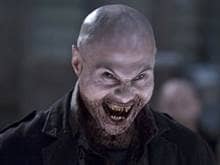
By 2007, the vampire had become so darn sexy that some people decided to become one. Most major cities now have small communities of self-dubbed "vampires" and, while most don't actually sip blood that often, some have gone so far as to get fang implants.
"30 Days of Night" reminded us that vampires, at their core, are the piranhas of the supernatural world--vicious, unrepentant killers capable of depopulating a whole Alaskan village in a month. The vampires in "30 Days" took their tips from "Nosferatu," not Lugosi's ever-so-suave "Dracula." And to make things even creepier, these guys could care less whether you're carrying a crucifix or not. When one soon-to-be victim begs God for help, a vampire looks at her and tells her, "No God." And then he kills her. If there's anything worse than a hungry vampire, it's a hungry, atheistic vampire.
Modern Vampires: True Blood
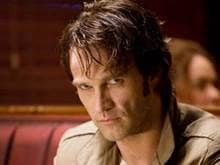
"Nosferatu"? "Dracula"? That's soooo 20th century. HBO's series "True Blood" tells us that vampires aren't God-forsaken demons or uber-suave charmers: They're simply a misunderstood minority—victims of wanton prejudice and self-righteous fervor. Sorta.
It seems as though a handful of scientists have created a substance called Tru Blood—sort of a nicotine patch for vampires that takes away their craving for human blood. Of course old habits die hard for some vamps, but most just want to be accepted as ordinary citizens.
Yeah, good luck with that. Sure, maybe some folks might welcome vampires into their communities, even after seeing "30 Days of Night." But HBO's vampires aren't so much bloodsuckers as they are walking, talking metaphors, which some critics say sucks all the fun out of the show.
Gentle Vampire: Twilight
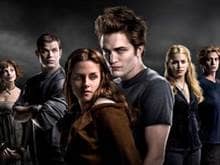
In Bram Stoker's "Dracula," the Count was a convenient Victorian-era proxy for sexual desire run amuck. Enter Edward Cullen—a chaste, temperate, Victorian-style hero who happens to be a vampire.
Edward was raised in a family that believes in "vampire vegetarianism:" They only hunt animals, never people. The blood of his paramour, Bella, is intoxicatingly tempting, but with Herculean will he resists her arterial charms—even though she herself longs to be bitten. Both adolescents are torn by desire, but it's Edward who puts on the brakes.
Stephenie Meyer, an observant Mormon who has never seen an R-rated movie, may have given the vampire its final dose of redemption. What was once a demon has become a hero, with values largely informed by Meyer's faith.
But if we've learned anything from the history of vampires, you can't keep 'em boxed up for long. Edward Cullen may rule this day, but Nosferatu is still out there, lurking in the shadows.



Tidak ada komentar:
Posting Komentar